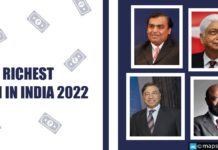Economic growth data revised
Economic growth in the fiscal year 2013-14 has been a lot faster than previously estimated, new reports suggest. Mr. TCA Anant, the Chief Statistician of India (CSI), revealed last week that India’s growth in the last fiscal year may have been over 50 percent faster than estimated. The national economic growth rate for the FY 2013-14 which had previously been estimated to be at 4.7 per cent has now been retrospectively revised to 6.9 per cent. Apart from this, the growth of the Indian economy for the preceding year (FY 2012-13) was also revised to about 5.1 percent from the previous estimate of 4.7 percent. The new method of computation of economic growth data is the gross value-added (GVA) method of calculation.
The change in computation methods, however, does not affect the overall size of the nation’s economy. The ranking of India’s USD 1.8 trillion economies also has not changed said the government. Mr. Anant asserted that, “Our ranking in GDP terms will not change as the size of economy has almost remained the same.” The introduction of the new methodology has, in fact, brought our national measures up to par with global standards. The new method estimates economic growth by a study of market prices and by emphasising on CPI (consumer price index) rather than the WPI (wholesale price index) inflation.
Outpacing China – now in sight?
According to previous estimates by the Reserve Bank of India (RBI), India’s growth by the end of 2015 was to be pegged at about 5.5 percent. If the new computation methods are to be followed, however, it may be much higher. Late last month, the International Monetary Fund (IMF) predicted that the growth rate of the Indian economy is set to overtake that of its north -eastern neighbour, China, within the next 2 – 3 years. The World Bank also published its “Global Economic Prospects” report last month, which suggests that India’s gross domestic product (GDP) will grow by 7.1 percent in 2017 while China will be at about 7 percent – the Indian economy’s growth rate overtaking that of China. With the new computation system in place this out looks much closer in time than suggested by either the IMF or the World Bank. India may set to be the world’s fastest-growing major economy as early as the next fiscal year. Uncertainty about the computation systems currently in use, however, does take the sheen away from the good cheer that would ordinarily accompany such news.
Major concerns
Now, it is clearly a major concern if the national economic growth statistics are to be considered unreliable. It is a matter of grave concern for both administrators and economists if economic growth data or computation methods do not adequately reflect the real scenario in the country. The revisions in growth data have imparted a boost to the size of nominal GDP. While this should typically mean a reduced current account deficit burden and a healthier economy overall, this does not look like the real scenario. The nominal GDP of FY 2013-14 look almost the same as the result of the new calculations. This implies that there is far less slack in the economy than estimated and that policies will now have to reflect the tightening scenario.
Today, in his monetary policy review, RBI Governor Mr. Raghuram Rajan chose to leave the rates intact while only slashing the SLR by 50 basis points. This might be the likely result of the new data. “I don’t want to say anything about the numbers until we understand them better,” said Mr. Rajan. He also asserted that it would be “premature to take a strong view” based on the new findings.
Was UPA’s performance misjudged?
The revelation about the economic growth computation has not been free from its share of political controversy. “The data released (today) and the other economic indicators conclusively establish that the UPA government succeeded in substantial measure on all the four objectives”, said the former Finance Minister Mr. P Chidambaram, insinuating that the UPA had been successful in trimming inflation, boosting growth, fiscal consolidation and trimming the country’s Current Account Deficit (CAD). One of the major allegations faced by the Congress- led UPA in the run up to the 2014 Lok Sabha elections, was that it had plunged the country into acute financial distress and failed to stimulate growth. While the UPA may now be quick to deny the charges citing that the revival from the economic meltdown was very real, the varied number of scams and widespread corruption prevalent during the UPA was also very apparent. The economic growth was not felt by the people due to the skyrocketing food prices, the volatility of the rupee, and the widening CAD. A single year’s revival was not adequate to counter the dismal economic state of the previous years. The sharp drop in economic growth from over 9 percent growth, the economic slowdown following global cues also took time to be felt in Asia, specifically in India.




